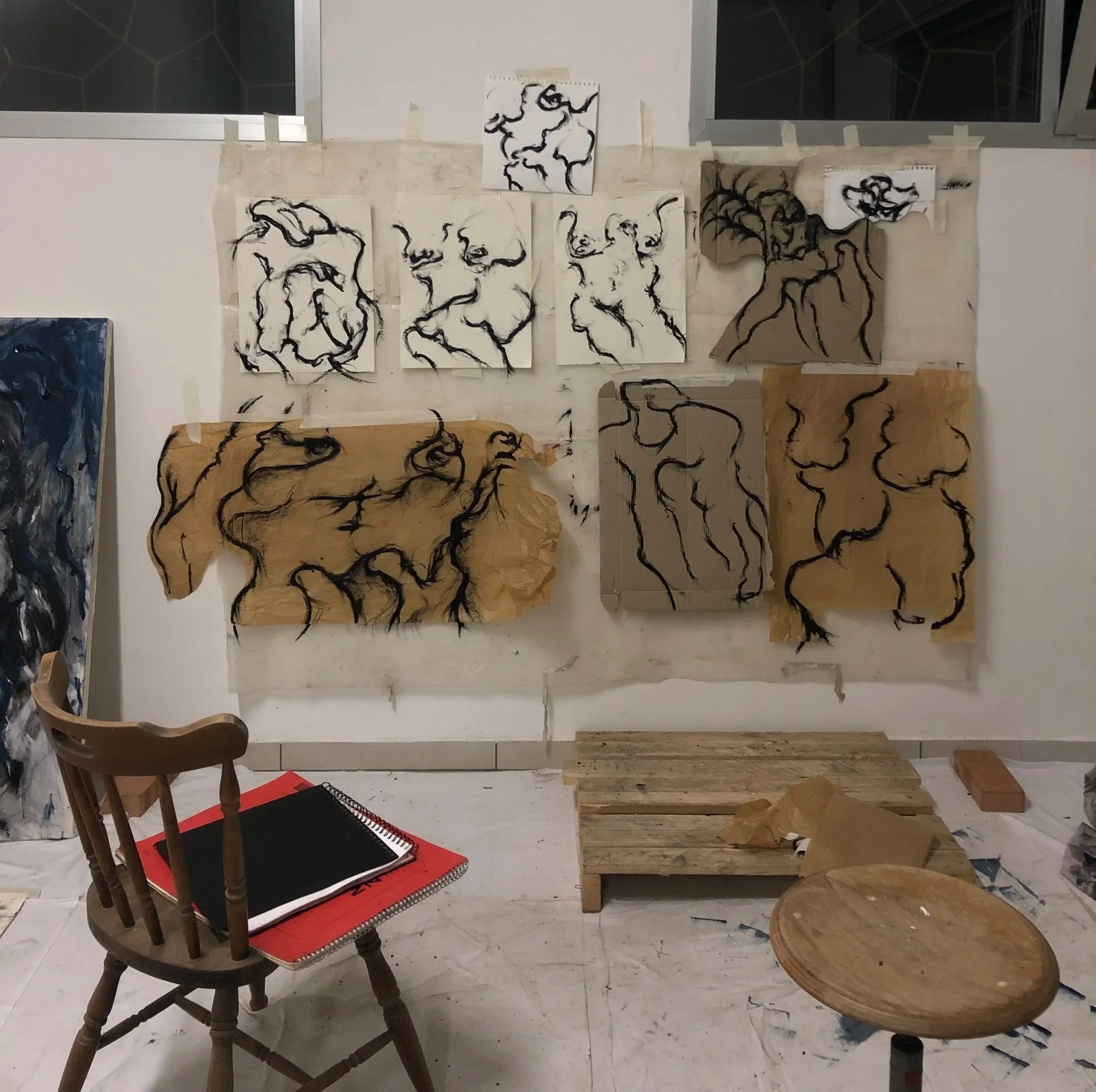The expression of gesture through charcoal
charcoal sketches
For Sandro D’Agaro, charcoal was not simply a material, but a true instrument for training the gaze. Through it he learned how to observe deeply, to capture the nuances of reality, and to build forms that were sincere, free from any artifice. His first encounter with charcoal took place at the Academy, during an anatomy class: it was there that he discovered the immediate and direct power of the black mark, capable of restoring the body to its essence without mediation. That first experience opened a path destined to become fundamental in his practice.
drawing session with model, 2023
Later, this discovery found full realization in the atelier, where he spent long evenings drawing men and women from life. Charcoal allowed him to establish a direct dialogue with the body, to interpret its volumes, tensions, and shadows. These were no longer academic exercises but acts of liberation: he freed the line, freed the mind. Every stroke became a spontaneous gesture, detached from imposed rules, the result of an intimate relationship with the subject. The atmosphere of the atelier, with models posing in silence, became a place of great freedom. There was no judgment, no competition, only the possibility of observing and responding. Nudity, far from being provocation, was transformed into truth: the body as pure presence, as an occasion to train the eye and the honesty of the line. In two years of intense work, Sandro produced more than two thousand life drawings. Each sheet represented a fragment of research, an attempt to capture the breath and tension of the human body. This immense body of work was not just a quantitative exercise, but an archive of experiences, of trials, of victories and failures, that together built a genuine education in seeing. Charcoal, with its fragile and powdery nature, became the ideal medium for this research. Unlike oil or acrylic paint, which require time and layering, charcoal offers immediacy, allowing for correction, erasure, and rethinking. It is a medium that accepts error and transforms it into an integral part of the drawing. For Sandro, this meant finding a language in which uncertainty itself could become expressive, where the hand could move without fear. Over time, the practice of life drawing became intertwined with his pictorial research. The rapid lines, the decisive gestures, the ability to capture the body in just a few strokes, later resonated in his canvases, where instinct and gesture play a central role. In this sense, charcoal was the training ground that allowed him to refine not only his technique, but above all his creative attitude: to observe, to let go, to trust the gesture. Today Sandro preserves those drawings with great care, almost as if they were a personal diary. He does not consider them mere exercises, but testimonies of a crucial period, when he learned to look and to be looked at, to build a relationship of trust with his subjects and with himself. Those two thousand works constitute a private archive, an emotional and formative heritage that continues to nourish his art. Charcoal remains for him a symbol of authenticity. In an age where images are often polished, filtered, and manipulated, the raw, direct mark of charcoal restores an essential relationship with reality. It is a matter that stains the hands, crumbles on the paper, and imposes a physical closeness, an intimacy with what is represented. It is, in other words, a medium that obliges the artist to be present, sincere, vulnerable. For this reason, looking back at his path, Sandro recognizes that his encounter with charcoal was decisive: not a simple technical step, but an experience of truth. Drawing with charcoal meant, for him, learning to look with new eyes, to allow authentic forms to emerge, to free himself through the line. That practice still lives on in his painting, in his gestures, in his ability to transform the instant into form and memory.

